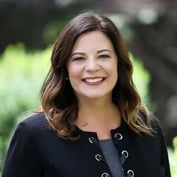After declining in 2020, charitable giving rebounded last year, according to BNY Mellon Wealth Management’s 2022 Annual Charitable Gift Report, released Wednesday. The number of gifts increased by 10%, the total dollar amount of gifts by 27% and the average gift size by 15%.
The report found that charitable gift activity overall returned to pre-pandemic trends as many nonprofits came up with new approaches to build support for their missions and connect with donors.
“The financial markets held strong in 2021 and the planned giving activity demonstrated how sustainable the giving increase in 2020 was — and even with the present market uncertainty, people don’t stop giving, Crystal Thompkins, head of philanthropic solutions at BNY Mellon Wealth Management, said in a statement.
“With the majority of planned gifts still being funded with cash, it’s important to focus on conversations about appreciated assets and ownership. There are significant opportunities for nonprofits to optimize giving by working with donors to consider non-cash gifts and craft unique gift solutions.”
Progress in 2021
According to the report, gifts of more than $100,000 represented just 29% of the total contracts in 2021, but accounted for 85% of the total gift dollars. Gifts between $10,000 and $50,000 represented 54% of all contracts, the same as in 2020.
Eighty-three percent of gifts last year were in cash, while 17% were non-cash gifts, nearly identical to year over year comparisons.
The gift flow ratio — a ratio equal to or greater than one indicates new gift activity that outpaces gift terminations — was 1.09, indicating new gift activity outplaced gift terminations.
The report said this was driven by health care organizations that experienced an increase in gift flows from 0.68 in 2020 to 2.24 in 2021. Faith-based, or religious organizations, experienced the biggest drop, falling from 2.94 in 2020 to 0.93 in 2021.
Last year, new donors slightly outnumbered repeat donors, 51% to 49%. New donors’ average gift was $118,492, while repeat donors’ gift averaged $100,016.
New trust activity increased by 33% year over year in 2021, but total gift amounts decreased and the dollar amount of additions to trusts fell by 50%.









 August 17, 2022 at 01:28 PM
August 17, 2022 at 01:28 PM











